AEL 100N: Adult Education learning & English as A second Language Orientation
Can be attended in the morning or evening. A required orientation for those interested in our FREE Adult Basic Education opportunities. Students can get preperation for high school equivalency tests (GED) through Math & English composition, and/or take a course to learn English as a Second Language (ESL). Please bring 2 forms of identification (i.e: state ID & social security card) to fully complete necessary forms at orientation.
COMG 1000: Introduction to ESL
Designed for students whose primary language is other than English. Addresses essential English language skills such as oral language development, sentence structure, and language functions in listening, speaking, reading, and writing in English as required to communicate in business and industry. Emphasis on high-frequency vocabulary and phonics; refining oral and written production and listening skills for enhanced job productivity; and increasing control of the English sound system.
COMG 1001: Intermediate ESL
Intended to build upon the English language to help students who are interested in learning for general communication, job preparations and conversational purposes. Provides on-the-job dynamic communicative practice for students whose primary language is other than English and introduces students to the uses of the English language in a variety of relevant job-related contexts.
COMG 1003: Speech Communication & Rhetoric
This course is intended to teach and refresh students with basic reading and communication skills needed to be successful in the workplace. Addresses essential listening, speaking, reading, writing and computational skills required by business and industry.
COMG 1004: Advanced ESL
A deeper dive into interpretation of factual material and inferences associated with daily and job-related communications through English. Communicative practice for students whose primary
language is other than English and focuses on recognition and comprehension of analogies, antonyms, and context clues.
COMG 1006: Reading & Comprehension
Intended to teach student’s vocabulary and communication skills needed to be successful in the workplace. Addresses mastery of a selected vocabulary of technical/occupational terms, including appropriate pronunciation of terms and use of English language structures required by business and industry.
ETWR 1005: Writing & Composition
Intended to introduce grammar, composition, basic writing and editing skills for technical writing. Focuses on the use of technical terms, graphics, and formatting technical documents for an academic essay.
ETWR 1043: Writing & Composition
Intended to help students further hone their writing skills necessary to composing an effective argumentative essay. Grammar, composition, writing and editing principles, applicable to scientific, technical, and business documents. Topics include sentences, organization of ideas, editing for correctness, unity and coherence, pre-writing, outlining, and revising; and developing business, academic and technical writing.
TECM 1003: Technical Mathematics
Focuses on technical math skills used in the workplace. Solve technical math problems using addition, subtraction, multiplication, and division; convert between whole numbers, fractions, mixed numbers, and decimals; perform calculations involving percents, ratios, and proportions; and convert numbers to different units of measurement.
TECM 1013: Basic Mathematics
Focuses on basic math skills used in the workplace. Course focuses on basic math skills used in the workplace. Topics include addition, subtraction, division, multiplication, and word problems.
TECM 1041: Algebra 101
This course is intended to teach and refresh students with technical algebra skills relevant to technical occupations. Topics include equations and inequalities, polynomials, factoring and other algebra skills.
TECM 1049: Geometry 101
Course focuses on technical mathematical applications used in the workplace. Topics include geometric reasoning, parallel and perpendicular lines, polygons and quadrilaterals, perimeters, and circumference and area that are encountered in the workforce.


